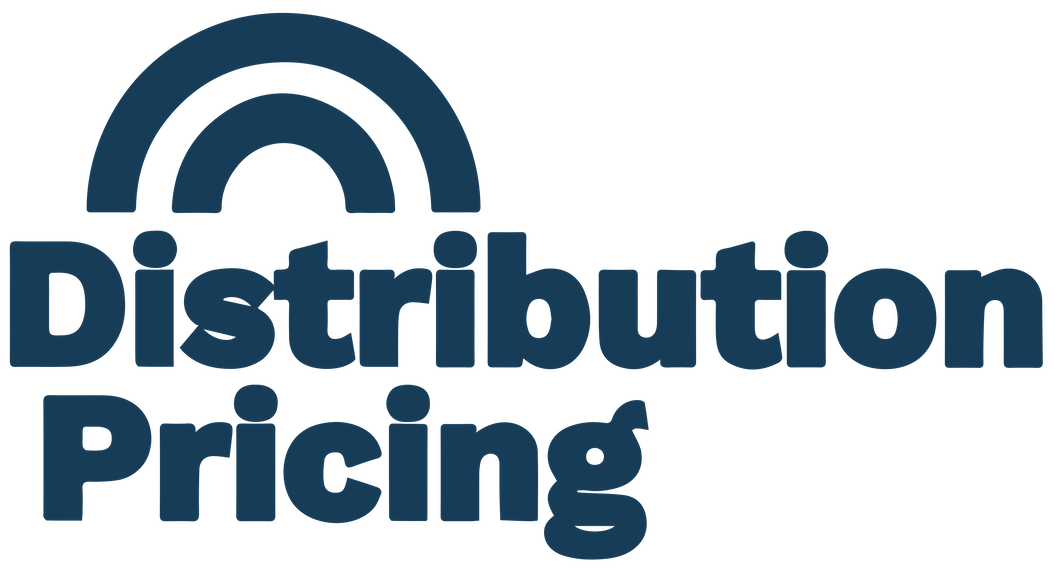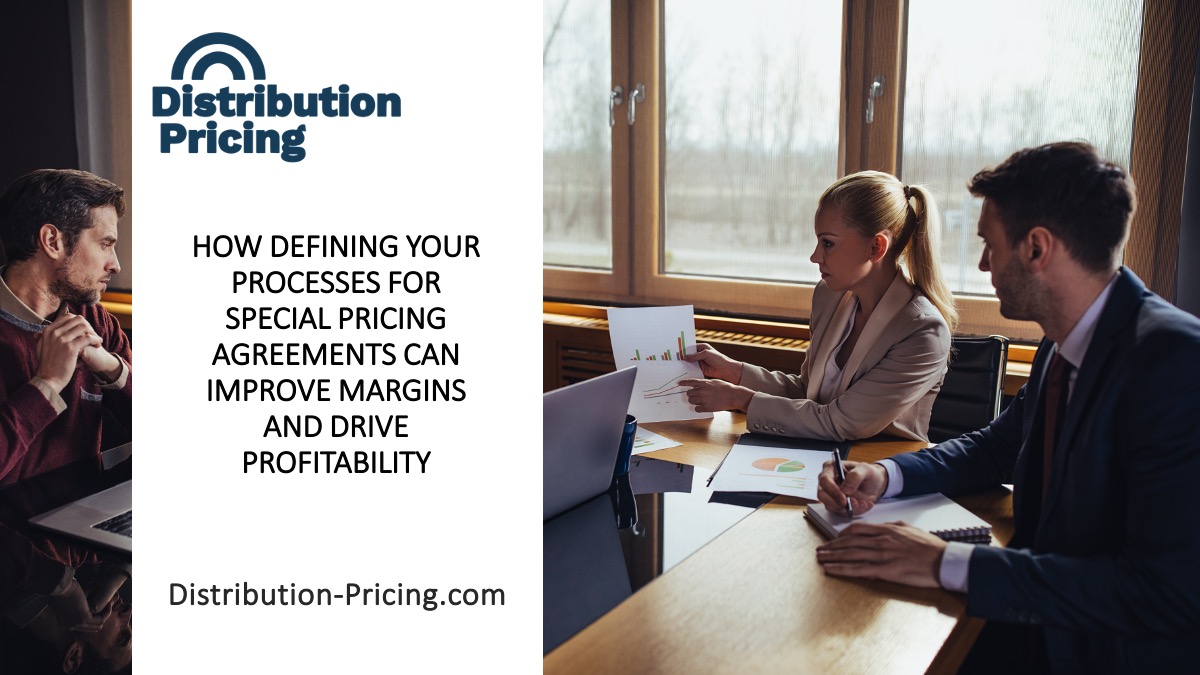Pricing is the battleground where wholesale distributors compete for profitability and market share. More distributors…

Price Modeling Software
Price modeling software offers a range of features that can help businesses make smart pricing decisions and maximize their profits. Not all price optimization solutions offer price modeling, which gives you the ability to model customer behavior, analyze pricing data, simulate various scenarios, and optimize strategies to create practical pricing strategies that lead to higher profits or help you realize other strategic goals like market penetration or rebate maximization. This article is meant to provide an overview for distributors who are unfamiliar with price modeling software, so we’ll give you a picture of the features, benefits and the potential issues associated with implementing modeling.
What is Price Modeling Software?
Price modeling software is a type of software that helps companies and organizations analyze, simulate and optimize pricing strategies. Typically, a distributor would want to model various pricing scenarios and pricing structures to maximize profitability. You might have other goals you want to achieve with new pricing, such as market penetration, rebate maximization, and vendor comarketing. A higher-end price optimization tool should provide distributors with the ability to test different price points to strike a perfect balance between revenue and profit. This allows you to put some prior analysis into changing pricing in ways that won’t unexpectedly sacrifice customer purchasing frequency or send customer out the door to your competitors.
What are some of the things you might want to model? Every tool is different, but most of the distributors we talk to like to look at a blend of customer purchasing behavior and history, pricing and cost data, season demand patterns along with the ability to simulate and compare various pricing scenarios. You can do a what-if analysis of various price hierarchies to see which ones maximize revenue while reducing cost to serve. Some distributors use price modeling to look at inventory trends, trends in customer demand and identify new areas to balance stock or purchasing based on historical data. With some tools you can monitor your competitors’ pricing and test out changes based on your own data. This is important because you can’t always trust a competitor’s published pricing. You have no idea what was behind their decision to change pricing; however, with price modeling software you can predict what a similar change would have on your business.
Benefits of Price Modeling Software
Price modeling software gives distributors valuable insights into customer needs and take strategic actions based on real-time information.
Improved Pricing Strategies
There are many price optimization solutions on the market that can help distributors better manage their pricing strategies so they can maximize their profits and reduce expenses. Price modeling take this a step further by allowing distributors to input or integrate to data such as competitor prices, past sales figures, market trends, and customer preferences to generate accurate forecasts for future price points. The end goal of the modeling is to identify the most strategic prices for their products or services that will attract more customers while also increasing profitability. That’s not always obvious with simple optimization tools. Additionally, modeling solutions can provide simulations based on different pricing models that help you understand how different pricing options impact revenue and margins over time. By leveraging price modeling technology, distributors can be more competitive while also watching their bottom line.
Optimized Inventory Management
Price modeling software can help distributors optimize their inventory management strategies as well. It allows you to forecast customer demand and adjust prices accordingly, so you can keep your stock levels optimized and in line with demand patterns. Of course, many distributors take this a step further with specific inventory forecasting solutions as well. But many price modeling solutions can help you better understand the relationships between pricing, demand, purchasing habits and more so that you can avoid having too much or too little inventory. Monitoring trends in customer buying behaviors and adjusting prices to match your strategies can help you work more closely with your buyers. Every distributor is different – some require more sophisticated demand forecasting tools because they are in highly competitive and commoditized markets – but price modeling can help you kill two birds with one stone.
Increased Customer Satisfaction
At the end of the day, the right pricing is less about raising prices and more about improving the value you customers receive from your products and services. By using modeling software, you can determine the right mix of products, services, pricing and costs to maximize your profits while maximizing customer satisfaction. By understanding your customer preferences and patterns, you can offer optimized pricing that gives them a great value while taking your cost structure into account. Many modeling solutions allow you to monitor different sales data points and even compare with customer feedback or historical averages to make sure you stay competitive. Your goal should be to provide the best possible value to your customers, so they are satisfied, loyal and provide you with a higher-than-average customer lifetime value.
Competitive Edge
If you could monitor competitive pricing while also use your own historical sales information to adjust your pricing, you would be a step ahead of 99% of your competitors. You could respond to market changes more quickly, alert customers to changes that impact their business and be seen a market maker. It gives you an edge inside your business as well by helping you anticipate important new trends and adjust your sales and pricing accordingly.
Easier Decision Making
Price modeling software helps distribution companies make quicker, more informed decisions when it comes to pricing their products and services. By utilizing advanced technology like AI and mathematical algorithms that would be difficult to set up in simple business intelligence packages, distributors can analyze pricing data, simulate scenarios and optimize pricing structures to identify the most cost-effective prices that still ensure customer satisfaction. Price modeling software can help distributors save time by automating tedious tasks such as calculating prices and tracking sales figures, allowing them to focus more on other aspects of their business like vendor relationships, sales management, inventory levels, warehousing and more.
As you can see, solid price modeling software provides a range of features that help distributors gain insights into their pricing structure to optimize their profits while still delivering excellent customer experience. By using this type of software, companies can establish sustainable prices that are more aligned with their goals while satisfying customers’ needs at the same time. However, there can still be some downside to look at.
Issues with Price Modeling Software
While price modeling software can provide several benefits, there are some potential issues that must be considered as well.
One of the main concerns is data accuracy and reliability. Price prediction models rely heavily on historical data, so it’s important to ensure that the data is accurate and up to date. Additionally, if distributors use external sources for their pricing data, they need to make sure that these sources are reliable and comprehensive enough to yield meaningful results.
Compliance with local laws and regulations is another issue to consider when using any kind of price optimization, especially in regulated markets or markets with few competitors. Distributors need to make sure that their pricing strategies comply with applicable legal requirements, or they may face fines or other consequences.
Finally, companies should also be aware of potential ethical considerations when using any kind of price optimization. Your intention may not be to collude with competitors or discriminate against certain groups of buyers, but the data can lead you to decisions that appear to be unethical regardless of your intentions. It’s very important to have robust customer segmentation based on data established to help guide your price changes.
Fortunately, many of these issues can be addressed by properly analyzing the data used for price predictions and adjusting models accordingly if necessary.
If you’re looking to improve your pricing strategy and gain a competitive edge in the market, price optimization and modeling software is an effective tool to consider. There are many different types of software available that can help you analyze market data, simulate scenarios and optimize pricing structures to identify the most cost-effective prices that still satisfy customer demand. Our Price Optimization Solutions Guide provides an overview of some of the top solutions in this area, as well as helpful advice on selecting the right software for your needs. Alternatively, our experts are always available for more personalized assistance with selecting the right price optimization software for your business.



